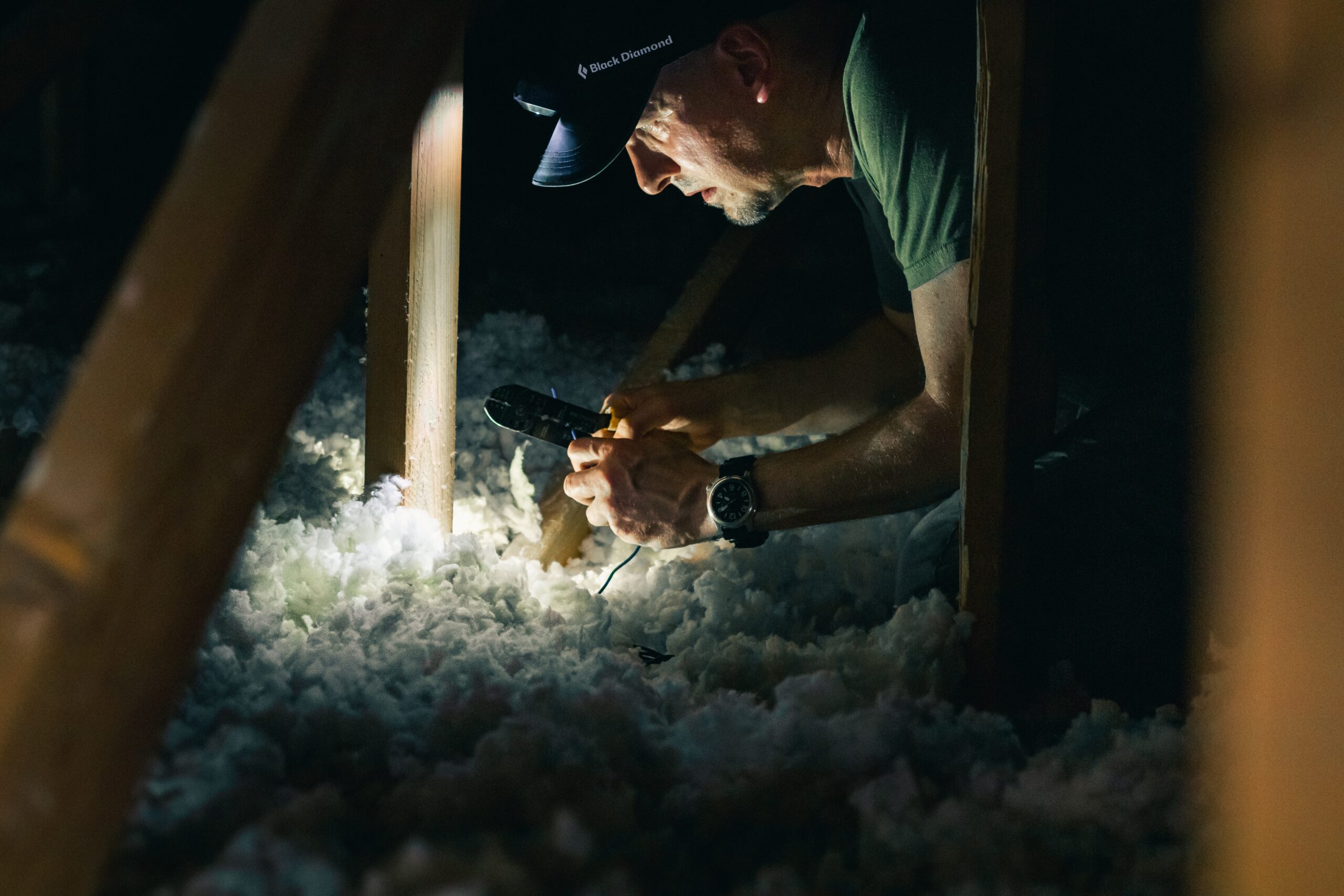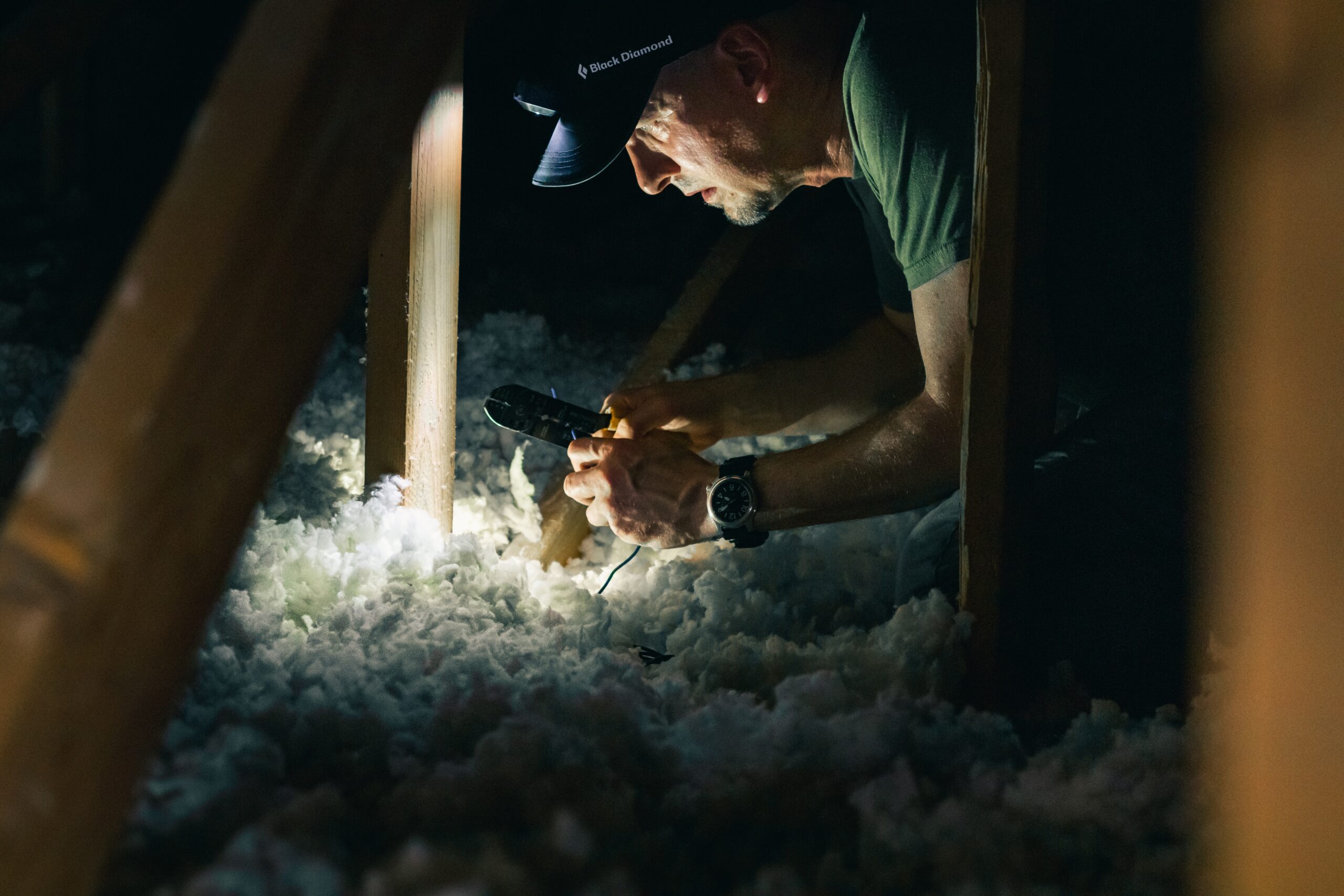
Imagine this: you’re cozying up indoors, savoring a cup of hot cocoa while the winter winds howl outside. As you soak up the warmth, a question niggles at the back of your mind – can you put loft insulation on top of loft insulation? In this article, we’ll finally tackle that query head-on and shed light on whether it’s a good idea to add another layer of insulation to your loft. So sit back, relax, and let’s unravel the mystery together.

Can You Put Loft Insulation On Top Of Loft Insulation?
When it comes to insulating your loft, you may wonder if it’s possible to add insulation on top of existing insulation. The good news is that in many cases, you can indeed put loft insulation on top of loft insulation. This article will explore the various types of loft insulation, the benefits of proper insulation, reasons why you may need additional insulation, important considerations to keep in mind, professional advice, regulations and building codes, methods for adding insulation on top of existing, the materials required, and whether you should opt for a DIY approach or hire a professional. By the end, you’ll have a comprehensive understanding of loft insulation and be able to make an informed decision for your own home.
Types of Loft Insulation
Before diving into the topic, it’s important to familiarize yourself with the different types of loft insulation available:
Blanket or Mat Insulation
Blanket insulation, also known as mat insulation, is perhaps the most common type used in lofts. It typically consists of mineral wool or glass fibre and comes in rolls or batts. Blanket insulation is easy to install and highly effective in reducing heat loss.
Loose-Fill Insulation
Loose-fill insulation, as the name suggests, consists of loose materials such as cellulose, mineral wool, or recycled newspaper. It is well-suited for hard-to-reach areas and irregularly shaped spaces, providing excellent coverage and insulation performance.
Rigid Board Insulation
Rigid board insulation is a solid, dense type of insulation commonly made from materials like polystyrene or polyisocyanurate. It is ideal for use in loft floors or walls, offering high thermal resistance and structural support.
Spray Foam Insulation
Spray foam insulation is a popular choice for loft insulation due to its ability to fill small gaps and crevices. It expands upon application, creating an airtight seal and providing exceptional thermal performance.
Reflective Foil Insulation
Reflective foil insulation consists of a layer of foil that reflects radiant heat away from the loft space. It is typically installed under the roof rafters or on the loft floor, serving as a barrier against heat gain in summer and heat loss in winter.
Benefits of Loft Insulation
Now that you’re familiar with the different types of loft insulation, let’s explore the numerous benefits it can provide:
Energy Efficiency
Properly insulating your loft can significantly improve the energy efficiency of your home. Insulation acts as a barrier, preventing heat transfer between the interior and exterior of your home. This helps to keep your home warm in winter and cool in summer, reducing the need for excessive heating or cooling and ultimately lowering your energy bills.
Reduced Heating and Cooling Costs
By minimizing heat loss during winter and heat gain during summer, loft insulation can lead to substantial savings on your heating and cooling costs. With the right insulation, you can create a more comfortable living environment while consuming less energy.
Improved Comfort
One of the key benefits of loft insulation is the improvement in overall comfort within your home. By adequately insulating your loft, you can maintain more consistent temperatures throughout the year, eliminating cold spots or drafts and creating a cozy and inviting space.
Noise Reduction
Insulation not only helps with temperature regulation but can also contribute to noise reduction within your home. Loft insulation has sound-absorbing properties, minimizing the impact of external noises such as traffic or neighbors, creating a quieter and more peaceful living environment.
Reduced Carbon Footprint
By reducing your energy consumption through effective loft insulation, you can also help to reduce your carbon footprint. Using less energy means fewer greenhouse gas emissions, making your home more environmentally friendly and contributing to a more sustainable future.
Condensation Prevention
Proper insulation can also help to prevent condensation issues in your loft space. Insulation acts as a barrier against cold surfaces, reducing the potential for condensation to form. This helps to prevent moisture-related problems such as mold, dampness, and structural damage.
Increased Property Value
Investing in loft insulation not only benefits you financially through energy savings but can also increase the value of your property. Well-insulated homes are highly desirable in the real estate market as they offer improved energy efficiency and comfort, attracting potential buyers and potentially increasing the resale value of your home.
Need for Additional Loft Insulation
While existing loft insulation can offer significant benefits, certain situations may warrant the need for additional insulation. Some of the common reasons include:
Inadequate Insulation Levels
If your current insulation is not providing sufficient thermal resistance, adding more insulation can help to improve its performance. Inadequate insulation levels can result in heat loss, energy inefficiency, and discomfort in your home.
Insufficient Thermal Performance
Over time, insulation materials can degrade or become compressed, losing their original performance. If you notice a decrease in the thermal performance of your loft insulation, it may be time to consider adding more insulation on top to restore its effectiveness.
Old or Deteriorated Insulation
If your loft insulation is old, damaged, or deteriorated, it may no longer provide adequate insulation. In such cases, adding new insulation on top of the existing insulation can help to enhance the overall insulation performance and extend the lifespan of your insulation system.
Change in Regulatory Standards
Changes in building regulations or thermal standards may require you to upgrade or add insulation to meet the new requirements. Staying up to date with the latest regulations ensures that your home remains compliant and energy efficient.
Renovations or Extensions
If you’re planning renovations or extensions that involve your loft space, it presents an opportunity to improve the insulation. Adding insulation on top of existing insulation during these projects can help to ensure a consistent, high-performing insulation system throughout your home.

Important Considerations
Before adding loft insulation on top of existing insulation, there are some important considerations to keep in mind. These include:
Building Regulations
It is crucial to comply with any relevant building regulations when adding insulation to your loft. Building regulations vary based on your location, so it’s essential to familiarize yourself with the specific requirements in your area. Complying with these regulations ensures the safety, efficiency, and legality of the insulation work.
Structural Suitability
Before adding insulation on top of existing insulation, you need to assess the structural suitability of your loft. Adding excessive weight through multiple layers of insulation can strain the structural integrity of your loft, potentially causing damage. Consult with a structural engineer or insulation expert to determine if your loft can safely accommodate additional insulation.
Vapour Barrier Installation
When adding insulation on top of existing insulation, it’s important to consider the installation of a vapor barrier. A vapor barrier helps to control moisture levels and prevent condensation within the layers of insulation. Consult with a professional to assess the need for a vapor barrier based on your specific circumstances.
Ventilation Requirements
Maintaining proper ventilation in your loft is crucial to prevent moisture buildup and maintain good air quality. Adding insulation on top of existing insulation may impact the natural airflow and ventilation in your loft. Properly assess and install adequate ventilation systems in conjunction with additional insulation to ensure a healthy and moisture-free environment.
Climate and Location Factors
Consider the climate and location of your home when deciding on the type and amount of additional insulation. Cold climates may require higher levels of thermal resistance, while hot climates may prioritize heat-reflecting insulation. Consulting with insulation experts or energy auditors can help you determine the most suitable insulation for your location and climate.
Professional Advice
When it comes to adding loft insulation on top of existing insulation, seeking professional advice is highly recommended. Insulation experts can provide valuable insights and guidance tailored to your specific requirements. Here are some ways professionals can assist:
Consulting with Insulation Experts
Consulting with insulation experts allows you to discuss your insulation needs and gain a comprehensive understanding of the options available. These professionals can assess your current insulation, recommend suitable solutions, and guide you through the entire insulation process.
Energy Audits
Energy audits involve a thorough assessment of your home’s energy performance to identify areas for improvement. Energy auditors can evaluate your current insulation, identify energy inefficiencies, and provide recommendations for additional insulation based on your specific requirements.
Insulation Assessments
Insulation assessments involve a detailed examination of your existing insulation, checking for any damage, compression, or degradation. Insulation experts can determine if additional insulation is needed and provide guidance on the most appropriate insulation materials and methods for your situation.
Accurate Measurement of Existing Insulation
Measuring the existing insulation accurately is essential to determine the additional insulation required. Insulation experts can measure the thickness and thermal resistance of your current insulation to calculate the necessary amount of insulation needed to achieve the desired level of thermal performance.

Regulations and Building Codes
Before adding insulation on top of existing insulation, it’s crucial to understand the regulations and building codes that apply to your area. These regulations vary by country, state, and even local municipalities. Familiarize yourself with the relevant regulations to ensure compliance with safety standards. Some key areas to consider regarding regulations and building codes include:
National and Local Regulations
National and local regulations outline specific requirements and standards for insulation installation. They typically dictate the thermal performance levels, fire safety measures, and other aspects of insulation work. Research and adhere to the regulations applicable in your area to ensure a safe and legal insulation project.
Insulation Standards
Insulation standards specify the minimum thermal resistance levels that insulation materials should meet to provide adequate insulation. These standards help ensure energy efficiency and effective insulation performance. Familiarize yourself with the insulation standards that apply to your specific circumstances for optimal results.
Fire Safety Requirements
Safety is of utmost importance when it comes to insulation, especially in lofts with potential fire hazards. Building codes often include fire safety requirements for insulation, such as fire-rated materials or the installation of fire barriers. Make sure to comply with these requirements to ensure the safety of your home and occupants.
Removing Existing Loft Insulation
In some cases, it may be necessary to remove existing loft insulation before adding new insulation on top. This can be due to various reasons, such as the age or condition of the insulation. Here are some important considerations when it comes to removing existing insulation:
Assessing Condition of Existing Insulation
Before deciding to remove existing loft insulation, assess its condition. If the insulation is in good condition and still providing adequate insulation, there may be no need to remove it. However, if the insulation is damaged, compressed, or deteriorated, removal may be necessary to ensure optimal performance of the new insulation.
Safe Removal Methods
When removing insulation, it is essential to follow safe removal methods to prevent any health risks or damage to your property. Use protective equipment such as gloves, masks, and goggles, and dispose of the insulation properly according to local regulations. If you’re unsure about safe removal, it’s best to seek professional support for the removal process.
Disposal Guidelines
Loft insulation materials may have specific disposal guidelines due to their composition. Some insulation materials, such as older types containing asbestos, require special handling and disposal procedures. Ensure you understand the disposal guidelines for the specific insulation materials you’re removing to prevent any environmental or health hazards.
Professional Support for Removal
If you’re uncertain about removing existing loft insulation, or if it requires professional expertise due to its composition or condition, it’s best to seek professional support. Insulation contractors or removal specialists can assess the insulation, ensure safe removal, and dispose of it properly, giving you peace of mind throughout the process.
Methods to Add Insulation on Top of Existing
When adding insulation on top of existing insulation, several methods can be employed depending on your specific circumstances. Here are some common methods for adding insulation:
Adding Blanket Insulation
If your existing insulation consists of blanket or mat insulation, you can add another layer on top. Simply roll out the new insulation over the existing one, ensuring a snug fit and no gaps. This method is relatively straightforward and provides additional thermal resistance.
Utilizing Loose-Fill Insulation
For loose-fill insulation, such as cellulose or mineral wool, you can easily add more insulation by blowing it on top of the existing insulation. This method fills any gaps or voids, improving the overall insulation performance. It is particularly useful for irregularly shaped or hard-to-reach areas.
Installing Rigid Board Insulation
Rigid board insulation can also be added on top of existing insulation. Cut the boards to size and lay them over the existing insulation, ensuring proper alignment and coverage. This method provides additional thermal resistance and structural support.
Spray Foam Insulation Application
Spray foam insulation is versatile and can be used to add insulation on top of existing insulation. Spray the foam in areas where there are gaps or voids between the existing insulation layers. The foam expands and adheres to the surfaces, creating a seamless layer of insulation.
Reflective Foil Insulation Installation
Reflective foil insulation can be installed on the underside of the roof rafters or on the loft floor, providing a reflective barrier against radiant heat. This can enhance the overall insulation performance when added on top of existing insulation. Ensure proper installation to maximize its effectiveness.
Materials Required for Adding Insulation
When adding insulation on top of existing insulation, you may require specific materials depending on the method chosen. Some common materials include:
- Additional blanket or mat insulation rolls
- Loose-fill insulation materials
- Rigid board insulation panels
- Spray foam insulation
- Reflective foil insulation
- Tools for installation such as a utility knife, staple gun, or spray foam applicator
Ensure you have the necessary materials and tools before starting the insulation project to ensure a smooth and efficient process.
DIY vs. Hiring a Professional
Deciding whether to take a DIY approach or hire a professional for adding insulation on top of existing insulation depends on various factors such as your expertise, time availability, and the complexity of the insulation work. Consider the following:
DIY Approach
If you have experience with insulation projects and feel confident in your abilities, a DIY approach may be suitable. DIY insulation can save money, and with the right tools and materials, you can effectively add insulation on top of existing insulation. However, be sure to carefully follow all the necessary guidelines and safety measures to ensure optimal results.
Hiring a Professional
For complex insulation projects or if you lack the necessary expertise, hiring a professional is advisable. Insulation professionals have the knowledge, skills, and experience to assess your specific situation, recommend the most appropriate insulation solutions, and ensure proper installation. Hiring a professional can provide peace of mind and a guarantee of quality workmanship.
Conclusion
Adding loft insulation on top of existing insulation is often possible and can provide numerous benefits in terms of energy efficiency, comfort, and cost savings. Understanding the different types of loft insulation, the benefits it offers, and the reasons for adding additional insulation is crucial in making an informed decision for your home. Remember to consider important factors such as building regulations, structural suitability, ventilation requirements, and climate considerations. Seeking professional advice, adhering to regulations and building codes, and properly preparing for the insulation project can ensure optimal results. Whether you choose a DIY approach or hire a professional, prioritize energy efficiency and create a comfortable and sustainable living environment in your home.





